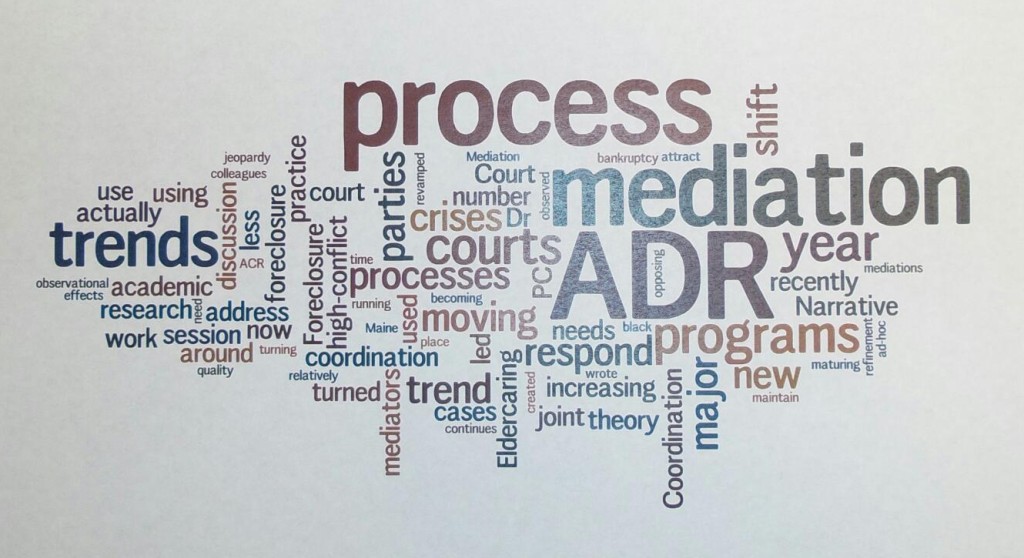As we enter a new year, we’ve decided to round up some of the most interesting trends we’ve observed in court ADR.
Court mediation used to respond to major economic crises and natural disasters
Last year perhaps the most visible trend in court ADR was the courts’ use of mediation to address truly large-scale crises. From the mediators who helped opposing groups reach the Grand Bargain that led Detroit out of bankruptcy, to the mediations being used to address thousands of insurance claims that remain from Hurricane Sandy, courts essentially created ad-hoc ADR programs to respond to major crises.
The joint session in jeopardy
A major topic of discussion this year was the increasing tendency for parties and their advocates to avoid the joint session in mediation. A wide-ranging discussion of how this trend affects the integrity of the mediation process and whether the shift can be turned back is sure to continue for some time to come.
Foreclosure Mediation reaches version 3.0
In a previous column about trends, we wrote about “Foreclosure 2.0.” We saw a trend then that continues into the present: with foreclosure mediation programs now in place around the country, many have turned from implementation to improvement. In Oregon, for example, the state legislature revamped its program to get more lenders to participate, and in Maine, the Attorney General led a process of evaluation and refinement.
Now that foreclosure mediation is maturing as a process, there is more opportunity for programs to connect and collaborate. With our own programs up and running, RSI is pleased to have assisted colleagues in Alabama and Massachusetts, who approached us to share information.
More research into what actually happens during mediation
The focus of mediation research is moving beyond studying outcomes and the effects of case characteristics and is now prying open the black box that is the mediation itself. From conversation analysis to observational studies of mediator behaviors, more researchers are trying to figure out what mediators actually do, and of what they do, what is most effective.
More use of parenting coordination and other processes tailored to specific needs
Parenting coordination has been around for a while, but recently we’ve heard more buzz about this process. PC and similar processes represent a shift away from using one single process, such as mediation, as a catchall. Instead, courts are tailoring alternatives for the parties who need them. Mediation works well for most family cases, but is less suited to high-conflict divorces. Rather than force those parties into a process that’s less likely to work, courts are turning to PC, a process that has proven beneficial in high-conflict cases.
Narrative Mediation and storytelling moving from academic theory into practice
We were surprised by the number and scope of Narrative-focused presentations at the ACR National Conference this year. While Narrative Mediation has been popular in academic circles for a while, an increasing number of practitioners such as Dr. Gerald Monk and Dr. Samantha Hardy are moving their work from theory into practice.
New forms of ADR respond to an aging population’s needs
We’ve recently seen both Elder Care Mediation and Eldercaring Coordination emerge as two relatively new processes to attract attention.
Establishing standards is becoming a basic part of creating a new process
We think the debut of the Guidelines for Eldercaring Coordination, just as this process is emerging, signifies a shift towards using guidelines to maintain quality, and a growing maturation of the field.
Thanks very much to Susan Yates, Jennifer Shack, Shawn Davis, Teresa Frisbie, Alyson Carrel and Daniel Gandert for their input.



This kind of article is one of the reasons RSI is so unusual in this day and age: great on nuts and bolts AND strategic overview. Thank you!